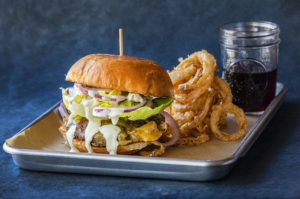Want some cookie baking advice from someone who’s made hundreds and hundreds of recipes? After a whole lot of trial and error, I’ve learned over the years how to get consistently good cookies every time. Or at least most every time. Follow these steps, and you’ll be golden (brown).
1. Use Parchment or Silpats
Martha uses them and so should you. Parchment paper (or a silpat silicone sheet — though I prefer parchment) creates a barrier between the tray and the cookie, allowing for more even baking and less messy cleanup. You won’t need to grease the sheet, and the cookies will slide right off. Trust me, it’s a major time saver.
2. Use Fresh Spices
I cannot stress this enough. Spend a few extra minutes a get freshly ground spices. The stuff at the grocery store is okay, but you won’t believe the difference in flavors if you stock up on a few dollars worth of fresh cinnamon, nutmeg, allspice and cardamom. Plus it makes your kitchen smell great.
3. Use Good Flour
The cheap stuff is just, well, cheap. Use unbleached, all-purpose flour. King Arthur’s is top notch.
4. Use Unsalted Butter, The Good Stuff
You don’t need to buy that really fancy artisan stuff for baking, but don’t cheap out either. i’ve used a variety of butters, and usually settle on Land ‘O Lakes as my go to. I’m more fond of Clover, of course — and snap it up when it’s on sale. Unsalted is the best choice for baking, since it won’t add extra salt to the final product. But frankly, it’s not tragic if you have to use it.
5. Room Temperature is the perfect temperature
We all know butter needs to be softened (if you’re in a hurry, you can nuke it for a few seconds in the microwave, but don’t melt it). But eggs work better in recipes at room temp, too. Don’t let them sit out too long, but if you can let them warm up a little, your ingredients will come together better.
6. Chill
Many recipes call for dough to chill for a few hours after mixing. That’s because the butter often gets very soft, and if you pop it into the oven right away, you get the “lace effect”, where the cookies just sort of become gooey, spread out messes on the tray. It’s a good idea to let most of your drop and butter-based cookies take a little time out in the fridge before you spoon ’em out.
7. Test Your Oven
I have a cheap oven that can be 50 or more degrees off from what I set it to. I’ve learned its quirks, but investing in a little oven thermometer isn’t a bad idea so you know exactly when you’re pre-heated and what the real temperature is.
8. Don’t Guess at measurements
Unlike cooking, baking is a science. Measurements need to be as precise as possible for the best effect. I’ve learned the hard way that guessing or throwing in an extra pinch or two doesn’t usually work out well. On that note, when measuring flour, lightly scoop it into the measuring cup then use a knife across the top to get a more accurate measure.
9. Stand Mixers Make Baking Easier
Not everyone can afford these monsters, but if you do a lot of baking, they are a sound investment. The power of a stand mixer allows you to really cream butters and sugars together and incorporate ingredients faster than using hand mixers. If it’s not in your budget, maybe a friend or relative will loan theirs out for a couple days. And while you’re at it, investing in a cookie scooper is a pretty awesome idea, too. They look like little ice cream scoops, and make spooning out drop cookies a lot easier and more uniform.
10. Vanilla matters
Oh, tell me you don’t use that horrible cheap stuff that’s mostly flavoring and alcohol. Buy expensive vanilla (and other flavorings) that are extracted from actual vanilla beans. Your cookies will taste much better. i promise.










